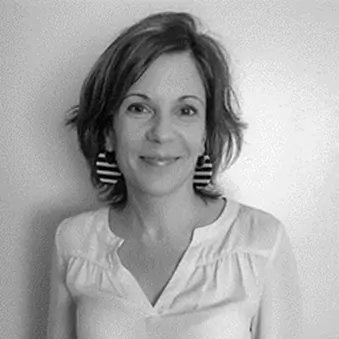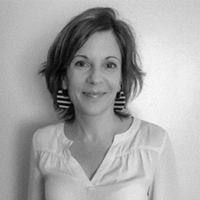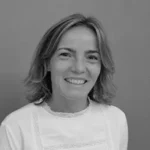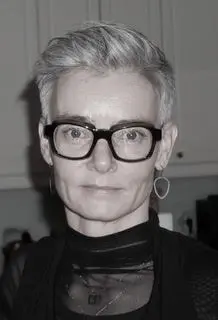Women in science: Prof. Ana GANHO-ÁVILA
In honour of the International Day of Women and Girls in Science on February 11th, we will be sharing six interviews from COST Action researchers about their career experiences.
Women are still under-represented in research and innovation careers according to the European Commission’s She Figures 2021 report. Since 2003, the report monitors the level of progress towards gender equality in research and innovation in the European Union and beyond.
A significant gender gap persists at all levels of science, technology, engineering, and mathematics (STEM) disciplines despite the fact that women represent half of the world’s population.
To mark the International Day of Women and Girls in Science, COST interviewed women in key leadership positions within their COST Action network. What are their experiences, the challenges they have faced during their respective career? Why it matters to talk about women in science for the next generations. What message they would give to young women scientists in 2022.

Prof. Ana GANHO-ÁVILA, PhD, chairs the Research Innovation and Sustainable Pan-European Network in Peripartum Depression Disorder
Ana GANHO-ÁVILA works at the Center for Research in Neuropsychology and Cognitive Behavioral Intervention (CINEICC) of the Faculty of Psychology and Educational Sciences, University of Coimbra – FPCE-UC.
My research focuses the combination of non-invasive brain stimulation and psychological interventions, its mechanisms of action and the patterns of brain activation and connectivity in the transdiagnostic processes of mood and anxiety disorders in the perinatal period.
What made you choose to become a scientist and determine your discipline, field of research?
As a psychologist and psychotherapist in the late nineties I was working with women’s mental health and receiving training on Coherence Therapy, a psychotherapeutic model based in two assumptions: 1) mood, thoughts, and behaviors are coherent with the person’s mental schemas of reality regardless of whether they are functional or functionless; 2) therapeutic shift happens when therapists stop counteracting or preventing involuntary patterns or teach alternative ones. The authors of this model – Bruce Ecker and Laurel Hulley – investigated the ingredients for transformative sessions and found that emotional schemas must be retrieved in session and reactivated while the individual vividly experiences a previous memory that contradicts it. Later, early in the XXI century, neuroscience gave a name to this process – memory reconsolidation. Reconsolidation was just starting to be understood using animal models but was (and still is) hardly understood in humans. Eager to find a consistent psychological method that worked, led me to enroll on a PhD program in Basic Psychology to study reconsolidation, aiming to translate it into my clinical practice. And it was my contact with the wonderworld of translational neuroscience and the possibility to merge it with women’s mental health that caught my enthusiasm until today.
Do you have a role model that led you to become a scientist?
I think Bruce Ecker, one of the founders of Coherence Therapy, was key for me. Early in his career he was a researcher in physics. He then pursued a career as an independent psychotherapist for the last 30 years, lending his methods as a researcher in physics to clinical psychology. This taught me that clinical psychology and hard sciences have much to gain from each other and can be complementary. As a woman in science, one of my role models is Lillian Evelyn Moller Gilbreth (an American psychologist and engineer). Lillian lived between 1878 and 1972 and during her lifetime she married, she was a mother of 12 and earned 9 academic degrees. Also, she pioneered the introduction of psychology into scientific industrial management. Such a role model shows that women can achieve anything they wish for in science even without compromising other dimensions of our lives.
Did you meet barriers during your career as a woman scientist?
Yes, of course. And more so being a woman starting her academic career already with 2 children and near 35 years of age. My first task was for me and my family to learn to trust each other’s capacities and accept my reduced availability at home so that I could focus first on my PhD and later my career. I am the one travelling away for a couple of days a week or for a couple of weeks a month and the time for motherhood and family is not what is expected from society. And we need to be in peace with that which might not happen all the time, as I so frequently question if I am doing it right.
Another question is job stability. Holding a PhD for 6 years and being 44 years old now, I would expect to have a stable job position which is almost impossible in academia. Early career researchers are expected to live out of grants and scholarships and for securing their own funding, applying to calls with success rates as low as 5%. Therefore, you must be open to instability or to move to other countries for better positions. I am one of the luckiest, but these mismatch between personal goals, expectations and experiences are for certain deterring many capable women from careers in science because although scientific production is achievable it is so at a high personal price.
Why do you think we are still having to talk about women in science?
Although my own experience has been overall pretty good, and although people are better at calling out gender-biased attitudes and behaviors, I still see that women are not heard in the way a man would be. There are still ongoing gender biases and dissuasive narratives on hiring in academia and science; women are still occupying lower positions in general and have less active and visible voices in scientific congresses and in the media (even in fields where women are the majority). Although speeches about women being less capable in science are not as open as they were in the past, discrimination regarding women is systemic and part of our narratives even at the highest levels of knowledge and at the most pro-equality cultures. We still need to talk about women in science because this systemic gender biased and discriminative narrative is sustained by social stigma and assumptions around the role of women in society of which we are not always consciously aware, leaving women achievements in science behind and without the public space they deserve. Moreover, by highlighting the achievements of contemporary women we encourage young girls to pursue their talents reducing the leaky pipeline of women in scientific careers.
What are the current challenges for women in science? What is the key to success in a career in science?
Careers in science/academia are so demanding that academics’ mental health in now an issue that everyone talks about. This is not a particular problem for women. It is also for men. Being available to work between 40-80 hours/week shouldn’t be a goal to achieve a position in science or in academia for anyone. Although the assumption that scientists and scholars must choose whether to have a family/personal life or a career is a challenge that crosses genders, the most vulnerable group to this pressure is women due to the expectations from their family, society and their own. Shifting the narrative, requires family/personal life/mental-health-friendly policies at the regional and local government levels, and the University level as well. But on the other hand, because these politics are still mainly focusing women, when we use it, we feel the stigma attached. In consequence, at times, I find myself doubting about my own value and the value of the grants, fundings, invitations I receive.
Most importantly, for women, the key for a good mental-health and success in a career in science is to have a good network composed by other women (and men) that support you and that you can support back.
What would be your predictions in your field of research?
In mental health, psychology, and social sciences at large, I anticipate more women than man across overall positions in the forthcoming years. However, I fear that the bottleneck for women at higher positions will be dissolved only within a couple of decades. When we focus on neuroscience and positions related to STEM, every year more and more girls apply to these courses which makes me believe the message is being correctly conveyed to younger generations. However, and despite the numbers of women in these fields will go growing, the struggles will be there for at least one more generation.
“We need to go on educating ourselves and societies so that we get to a gender unbiased conscious and unconscious common narrative for equality that crosses all research domains and levels of the scientific decision.”
What message would you give to young women scientists?
Whatever you decide to go for, there should always be a way to merge your different interests and priorities. Also, do not let yourself intimidate by expectations (your own or those of others) about women and motherhood. Believe yourself and make the space to decide what feels best for you and your life plans. Finally, grow and nourish respectful, mutual, and equitable working relationships that enhance your knowledge and progression while boosting those of your peers.
Read more interviews
Further Reading





